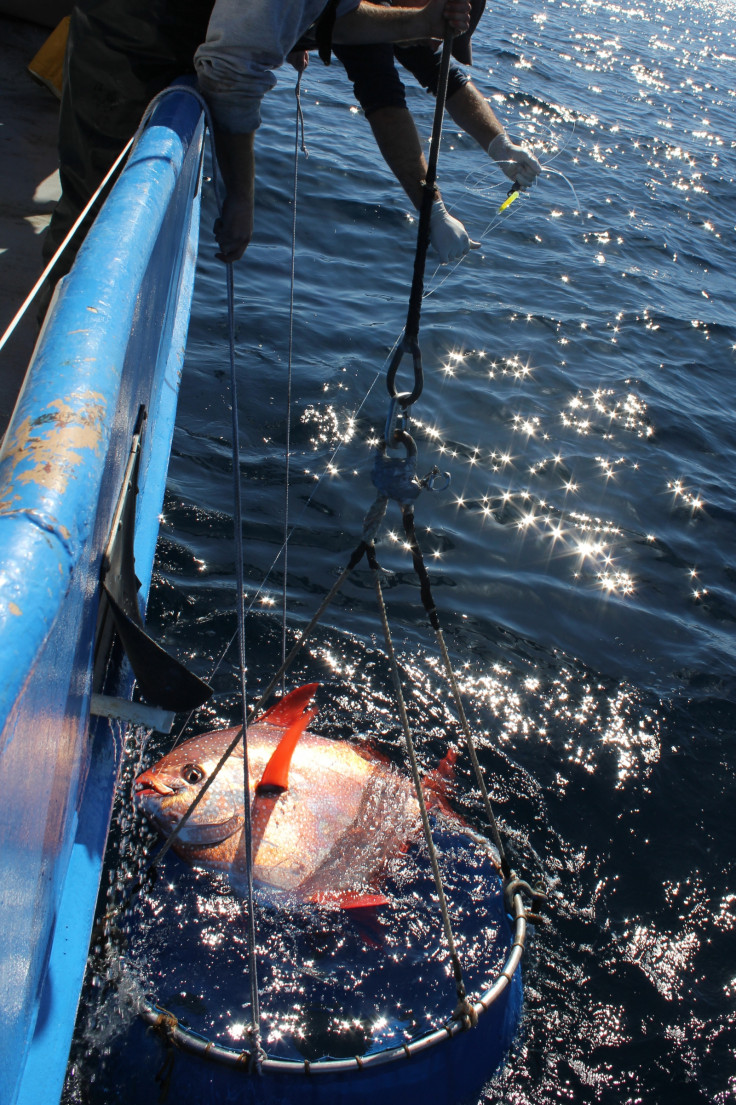Moonfish is world's first fully warm-blooded fish ever discovered

The world's first fully warm-blooded fish has been discovered by the National Oceanic and Atmospheric Administration – a moonfish about the size of a car tyre.
The fish – an opah – circulates heated blood through its body like mammals or birds. It is found in oceans around the world and tends to live hundreds of feet beneath the surface, where the water is dark and cold.
It is at these chilly depths that its warm blood becomes advantageous. Unlike other marine animals living at great depths that move slowly, conserving energy, the moonfish swims fast by rapidly flapping its large pectoral fins like wings through the water.
This constant flapping heats its body, speeding up its metabolism, movement and reaction times, making it a high-performance predator able to swim, react and see better than its prey.
Publishing their findings in the journal Science, researchers from the NOAA realised the fish was unusual after collecting a sample of its gill tissue – it had blood vessels that carry warm blood into its gills were wound around those carrying cold blood back to the body after absorbing oxygen.
This design meant warm blood leaving the body core helps heat up the cold blood returning from the respiratory surface – like a car radiator. Because of this heat exchange, the fish can maintain an elevated temperature even at very cold depths.
Lead author Nicholas Wegner said: "Before this discovery I was under the impression this was a slow-moving fish, like most other fish in cold environments. But because it can warm its body, it turns out to be a very active predator that chases down agile prey like squid and can migrate long distances.

"There has never been anything like this seen in a fish's gills before. This is a cool innovation by these animals that gives them a competitive edge. The concept of counter-current heat exchange was invented in fish long before we thought of it."
Findings showed that on average, the moonfish body temperature remains steady at 5C even when the water temperature dropped sharply.
Some other fish – such as tuna and swordfish – have warm blood, but only in some parts of their bodies like their muscles. This boosts their swimming performance but their internal organs including their hearts cool quickly and slow down when they dive into cold depths. They then have to return to shallow, warmer water to heat up again.
Opah spend most of their time at depths of between 150ft and 1,300ft. Scientists believed the fish evolved its warming mechanism in cold water in order to have a consistent edge over competitors and prey.
"Nature has a way of surprising us with clever strategies where you least expect them," Wegner said. "It's hard to stay warm when you're surrounded by cold water but the opah has figured it out."
© Copyright IBTimes 2025. All rights reserved.






















